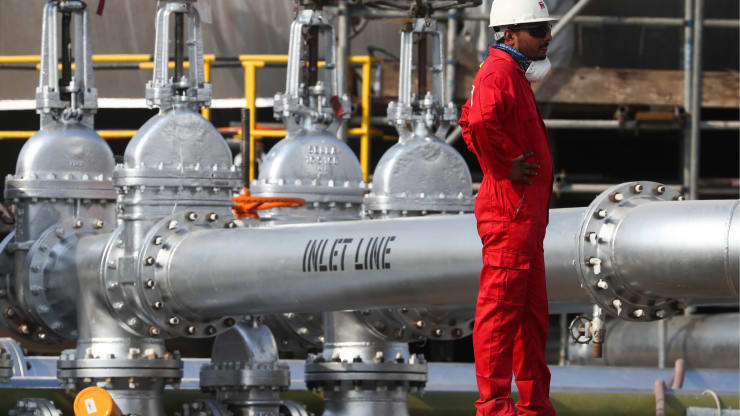Bloomberg
Oil & Gas 360 Publishers Note: The 360 team covered this on the Energy News Beat last week. Important story for the country of Saudi Arabia, as Saudi Aramco has one of the lowest cost to produce oil costs in the world, low prices reduces profits. Therefore reduces the amount of funds to pay for social programs. This is one to watch.
Saudi Aramco, the world’s biggest oil company, is set to return to the bond markets for the first time since April of last year as it seeks to fund a $75 billion dividend commitment.
Aramco, which hired banks including Goldman Sachs Group Inc. for the sale, needs to raise debt after slumping crude prices caused profit to fall by 45% in the third quarter. That’s left it unable to generate enough cash to fund the investor payouts, almost all of which go to the Saudi government, which needs the money to plug a widening budget deficit.
The company could raise about $6 billion, according to two people familiar with the deal. Aramco media officials didn’t immediately respond to requests for comment.
Aramco has slashed spending, cut jobs, and is considering selling some assets. Despite these efforts to conserve cash, its gearing — a measure of debt as a percentage of equity — has increased to 21.8%, above its target range of 5% to 15%. Gearing also rose because the company took on debt to pay for its $70 billion acquisition of Saudi Basic Industries Corp., a chemical maker, earlier this year.

Source: CNBC
“The challenge for the issue should not be demand, given the search for yield in such a low local and global interest-rate environment,” said Hasnain Malik, the Dubai-based head of equity strategy at Tellimer, a research firm specializing in emerging markets. “But low oil prices for longer, which means lower cash generation, must surely be reflected in tougher pricing for Aramco.”
The yield on Aramco’s $3 billion of bonds due in 2029 has dropped to 2.09% from 3.04% at the start of the year. That’s only slightly higher than the government’s equivalent securities, which trade at 2%.
The state-controlled energy firm, which sold shares on the Saudi stock exchange last year, will hold calls with fixed-income investors starting from Monday, according to a statement. A dollar deal with tranches maturing in three, five, 10, 30 and 50 years may follow, depending on investor demand.
Aramco would look at using “all the instruments available to us,” to meet its dividend pledge, Chief Executive Officer Amin Nasser said in June.
The company already drew down a $10 billion loan in July to help plug the funding gap. Its free cash flow in the first nine months of the year was $33.5 billion — more than $20 billion short of what it declared in dividend payouts for the period.
Big Payout
While crude prices have recovered from their March lows to around $44 a barrel, they’re still down 34% this year. Unless prices rise further, the government may not be able to rely on the annual dividend of almost $75 billion beyond next year, Moody’s Investors Service said last month. Aramco pledged to make the payout for at least five years after its listing.
Aramco’s debut bond sale last year raised $12 billion and was one of the most oversubscribed debt offerings in history, attracting more than $100 billion in investor orders.
The other banks chosen by Aramco as active bookrunners for the new deal are Citigroup Inc., HSBC Holdings Plc, JPMorgan Chase & Co., Morgan Stanley and Riyadh-based NCB Capital.

